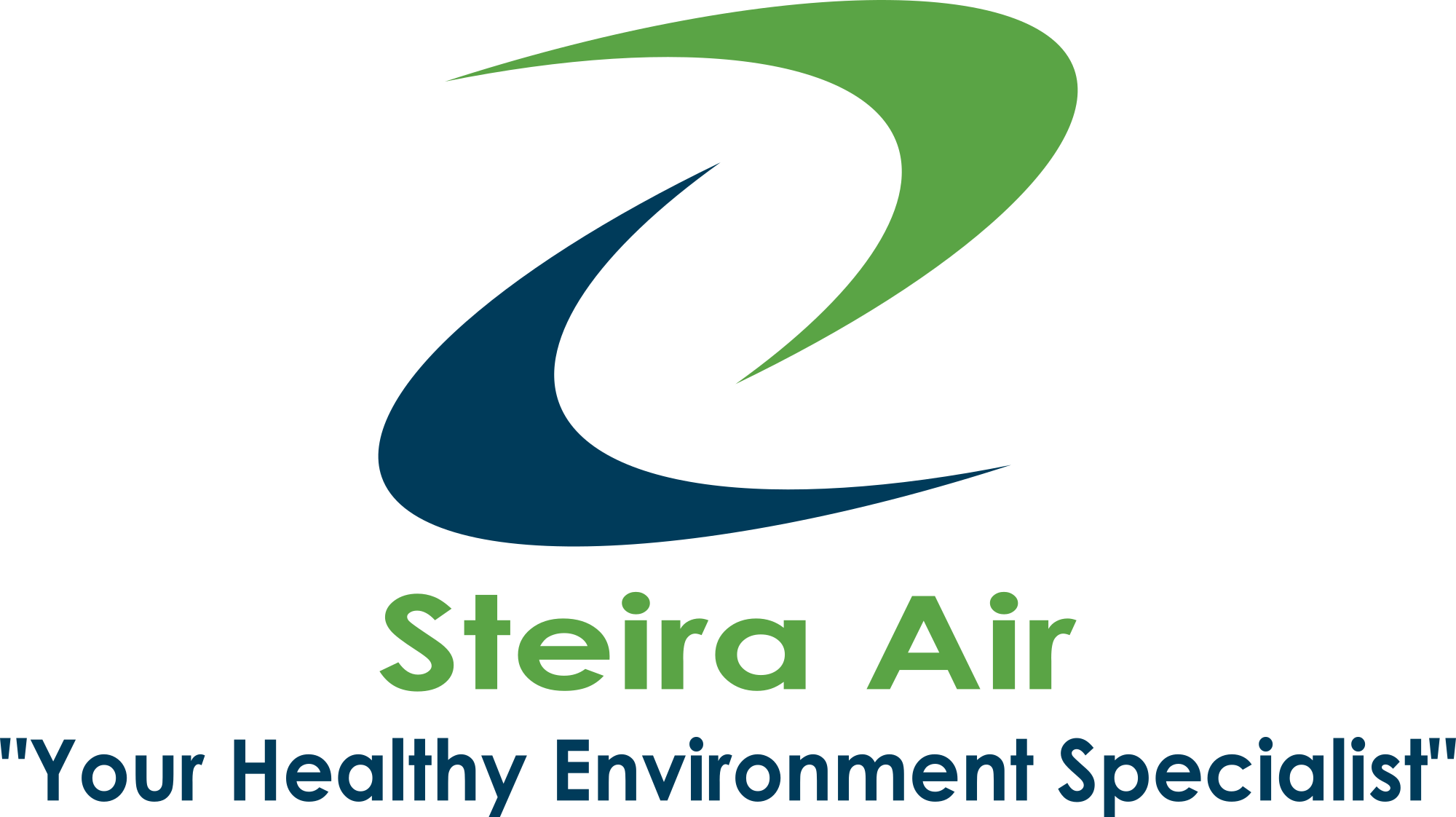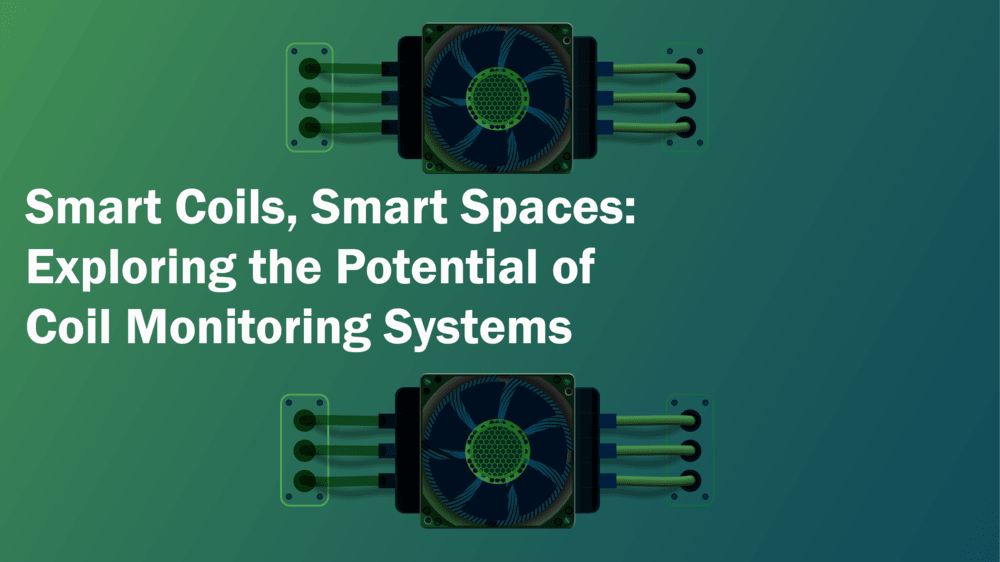Smart Coils, Smart Spaces: Exploring the Potential of Coil Monitoring Systems

Revolutionizing HVAC: Unveiling the Future of Coil Monitoring and Management
January 24, 2024
From Design to Reality: The Art of Precision with Steira Air’s CAM Technology
January 25, 2024Smart Coils, Smart Spaces: Exploring the Potential of Coil Monitoring Systems
In the realm of HVAC systems, the importance of maintaining clean and efficient coils cannot be overstated. The heart of any air conditioning or refrigeration unit lies in its coils, and ensuring their optimal performance is crucial for energy efficiency, cost-effectiveness, and the overall lifespan of the system. In this blog, we delve into the revolutionary world of coil monitoring systems, specifically highlighting the cutting-edge solutions provided by Steira Air. Furthermore, we’ll address the often underestimated dangers of dirty coils and how advanced monitoring technologies can mitigate these risks.
The Significance of Coils in HVAC Systems:
Coils, whether they be evaporator coils in air conditioning units or condenser coils in refrigeration systems, play a pivotal role in the heat exchange process. Over time, however, these coils can accumulate dirt, dust, and other contaminants, leading to a myriad of issues that can compromise the efficiency of the entire HVAC system.
Dirty Coils: The Unseen Threats:
Dirty coils within HVAC systems pose a plethora of unseen threats that can have significant repercussions on both the efficiency and longevity of the system. Let’s delve deeper into these hidden dangers:
Reduced Efficiency: The primary consequence of dirty coils is a decrease in system efficiency. As dust, dirt, and debris accumulate on the coils, they form an insulating layer that hampers the heat exchange process. This insulating layer forces the HVAC system to work harder to achieve the desired temperature, leading to increased energy consumption. In turn, this reduction in efficiency translates into higher utility bills for the building or facility.
Decreased Cooling Capacity: Dirty coils compromise the system’s ability to cool or refrigerate effectively. The insulating layer inhibits the efficient transfer of heat, resulting in a reduction in the cooling capacity of the system. This affects the comfort levels within indoor spaces and places additional strain on the HVAC system, potentially leading to long-term damage and increased maintenance costs.
Elevated Operating Temperatures: The accumulation of dirt and debris on coils causes the HVAC system to operate at elevated temperatures. Prolonged exposure to these higher temperatures can accelerate wear and tear on critical components such as compressors and fans. This increased stress on the system may eventually lead to premature equipment failure, necessitating costly repairs or replacements.
Indoor Air Quality Concerns: Dirty coils can become breeding grounds for mold, bacteria, and other contaminants. As air passes over these contaminated coils, it picks up these particles, distributing them throughout indoor spaces. This compromised indoor air quality can pose health risks to building occupants, particularly those with respiratory conditions or allergies. The presence of airborne pollutants can lead to discomfort, respiratory issues, and a decline in overall well-being.
Increased Operational Costs: The cumulative impact of reduced efficiency, decreased cooling capacity, and elevated operating temperatures results in higher operational costs for the HVAC system. Increased energy consumption, more frequent repairs, and the potential need for premature equipment replacements contribute to a substantial financial burden for building owners and facility managers.
System Strain and Shortened Lifespan: Dirty coils place undue strain on the entire HVAC system. The system’s components must work harder to compensate for the reduced efficiency, leading to increased wear and tear. This strain not only contributes to higher maintenance requirements but can also shorten the overall lifespan of the HVAC equipment, necessitating more frequent replacements and upgrades.
Introducing Smart Coil Monitoring Systems:
In response to the challenges posed by dirty coils, the HVAC industry has witnessed a groundbreaking development – Smart Coil Monitoring Systems. These advanced systems leverage cutting-edge technology to monitor the condition of coils in real-time, providing invaluable insights into system performance.
Real-Time Data Analytics: Smart coil monitoring systems utilize sensors and data analytics to assess the condition of coils continuously. This real-time data allows for proactive maintenance, enabling technicians to address potential issues before they escalate. The predictive nature of these systems helps reduce downtime and extend the lifespan of HVAC equipment.
Remote Monitoring and Control: With the integration of IoT (Internet of Things) technology, smart coil monitoring systems offer remote monitoring and control capabilities. Facility managers can access real-time data and adjust HVAC settings from anywhere, enhancing operational efficiency and reducing the need for on-site visits.
Energy Efficiency Optimization: By providing insights into coil performance, smart systems empower users to optimize energy efficiency. With the ability to fine-tune settings based on real-time data, HVAC systems can operate at peak efficiency, resulting in significant energy savings and a reduced carbon footprint.
Benefits of Coil Monitoring and Management Systems:
Enhanced Energy Efficiency:
- Continuous Monitoring: Coil monitoring systems continuously track the performance of coils, ensuring they operate at peak efficiency.
- Anomaly Detection: These systems can identify and rectify deviations from optimal performance, reducing energy consumption and enhancing overall system efficiency.
Cost Savings:
- Proactive Maintenance: By detecting potential issues early, coil monitoring systems enable proactive maintenance, reducing downtime and avoiding costly emergency repairs.
- Extended Lifespan: Regular monitoring and optimization contribute to the longevity of coils, minimizing the need for frequent replacements and associated expenses.
Environmental Sustainability:
- Reduced Carbon Footprint: Improved energy efficiency directly translates to a reduced environmental impact by minimizing greenhouse gas emissions associated with energy consumption.
- Eco-Friendly Practices: Coil monitoring systems support sustainability goals by promoting energy-efficient and environmentally conscious operation of HVAC and refrigeration systems.
Optimized Performance:
- Data-Driven Insights: The wealth of data generated by monitoring systems provides actionable insights into system performance, enabling informed decision-making for optimal operation.
- Customized Settings: Some advanced systems allow for the customization of coil performance settings based on specific operational needs and environmental conditions.
Prevention of Equipment Failures:
- Early Warning Systems: Coil monitoring systems provide early warnings of potential equipment failures, allowing for timely intervention before issues escalate.
- Fault Identification: By detecting faults in coils and associated components, these systems prevent unexpected breakdowns and minimize the impact on overall operations.
Remote Monitoring and Control:
- Real-Time Visibility: Coil monitoring systems often provide remote access and real-time visibility into system performance, enabling facility managers to monitor and control operations from anywhere.
- Alarming and Notifications: Instant alerts and notifications enable quick responses to critical events, facilitating timely corrective actions.
Compliance and Reporting:
- Regulatory Compliance: Some industries have strict regulatory requirements for environmental standards and energy efficiency. Coil monitoring systems help organizations comply with these regulations.
- Reporting Capabilities: These systems often come with reporting features, allowing organizations to track and document their energy efficiency and sustainability efforts.
Improved System Reliability:
- Predictive Maintenance: Utilizing predictive analytics, coil monitoring systems predict when maintenance is required, preventing unexpected failures and improving overall system reliability.
- Performance Optimization: By ensuring coils operate within specified parameters, these systems contribute to the reliable and consistent performance of HVAC, refrigeration, and industrial processes.
Conclusion
The adoption of smart Steira Air coil monitoring systems marks a significant leap forward in the HVAC industry. As we explore the potential of these technologies, it becomes evident that they offer a comprehensive solution to the dangers posed by dirty coils. Steira Air is at the forefront of this technological revolution, committed to delivering smart solutions that ensure optimal HVAC performance, energy efficiency, and indoor air quality. Embrace the future of HVAC maintenance with smart coils, smart spaces, and a commitment to creating healthier and more sustainable environments.




